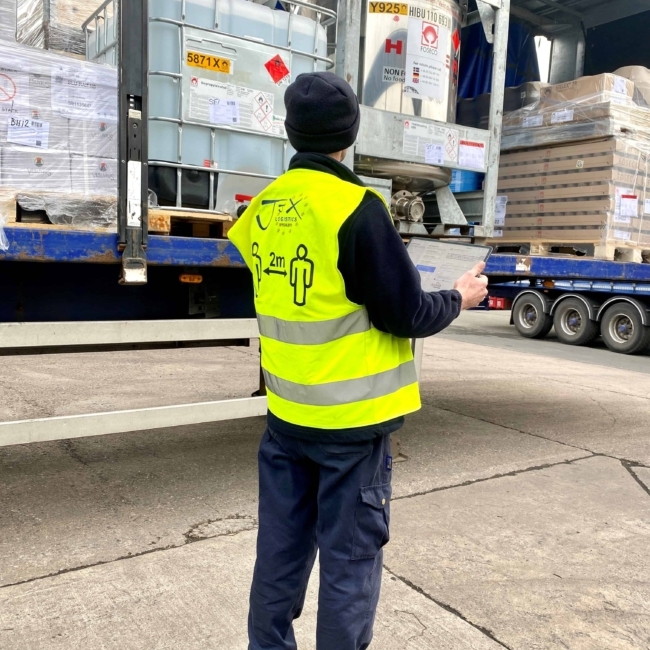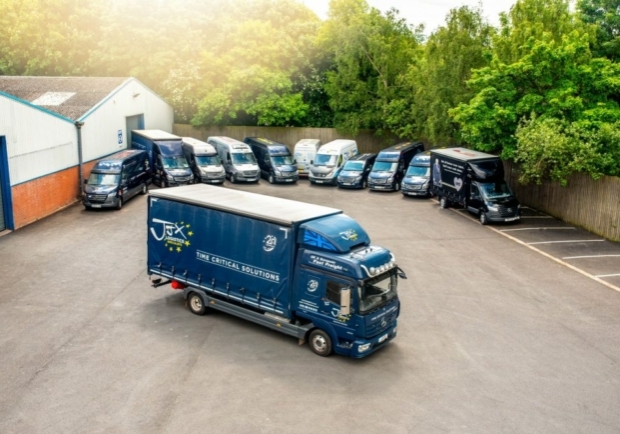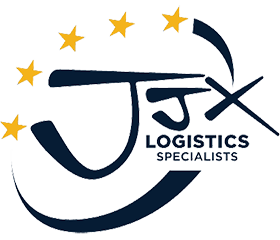If you’re interested in pursuing Heavy Goods Vehicle driving, JJX Logistics can provides an in-depth look at training for the role.
As a haulage partner across Europe and the UK, we’re able to provide a comprehensive overview of the path to becoming a qualified HGV driver in the UK and the responsibilities of the job.
Whether you're just starting out and need to apply for a provisional licence or you're preparing for the HGV driving test, we've got you covered.
Understanding the HGV Driver Role
Being a HGV driver means you'll be spending a lot of time on the road, driving vehicles that weigh over 3,500 kg. Driving responsibilities include long and short distances – whether in local, national or international areas, as well as unloading and offloading goods, and communicating with dispatchers for travel updates.
Additional responsibilities include inspecting and maintaining heavy vehicles, ADR transport, taking payments for deliveries and completing necessary paperwork. Your role may also involve writing progress reports.


Requirements for Becoming a HGV Driver
To become a HGV driver, you must meet certain requirements, as outlined by government and industry legislation.
Firstly, you need to have a full car licence and be over 18 years old – although, in some circumstances, the minimum age may be 21 years.
You must also pass medical fitness and eyesight requirements to ensure you're fit to drive safely.
Additionally, having no previous disqualifications or driving offences is crucial to becoming a HGV driver.
These requirements are in place to ensure that you're capable of handling the responsibilities that come with operating a heavy goods vehicle.
Overview of Different HGV Licence Categories
When obtaining your HGV licence, you must also choose the licence category. This will affect the responsibilities of the job, as well as your future job opportunities.
Depending on the vehicle you intend to drive, you can choose from different categories such as C, C1, C1+E, and C+E.
- The C category allows you to operate vehicles weighing over 3,500 kg with a trailer weight of up to 750 kg.
- If you opt for the C1 category, you can drive vehicles weighing between 3,500 and 7,500 kg with or without a trailer weighing up to 750 kg.
- The C1+E category permits you to drive vehicles weighing between 3,550 and 7,500 kg with a trailer weight above 750 kg.
- The C+E category is the largest and allows you to drive a vehicle weighing over 3,500 kg with a trailer weight above 750 kg.
Applying for a Provisional HGV Licence
Applying for a provisional HGV licence is the first step towards becoming a qualified HGV driver.
You will need to order D2 and D4 forms from the DVLA to apply for your provisional HGV licence, choosing the right category based on the vehicle you want to drive and the trailer weight you can tow.
While the D2 form can be completed independently, your D4 must be completed by a doctor, who will verify that you are fit to drive a heavy goods vehicle.
Once the forms have been completed and sent off to the DVLA, you should receive your driving licence within 3 weeks of the DVLA receiving and passing your application, although it may take longer if additional checks are required.
The HGV Driving Test
You must pass your HGV driving test if you are to become a qualified HGV driver.
The test is made up of two parts – a theory examination and a practical examination.
The theory test is taken first and is a written exam; it typically covers topics such as road signs, rules of the road, and safe driving practices.
The practical part of the test will require you to handle a large vehicle on the road safely in order to demonstrate your capabilities to the examiner.


Obtaining a Driver CPC
As a part of your qualification, you must also obtain your full Driver Certificate of Professional Competence (CPC). This is essential for HGV drivers where driving vehicles over 3,500 kg is the main part of their job.
In order to achieve this, you must complete a series of tests that demonstrate your knowledge and skills as a HGV driver. If you have already obtained the Driver CPC, or have acquired rights, you still need to complete periodic training to maintain the certification.
Finding HGV Driver Training Institutes
A comprehensive training course is essential to gain the experience required to successfully take your theory and practical driving test, as well as your Driver CPC.
In order to find an appropriate HGV driver training institute, it is important to connect with institutes that are accredited and recognised in the industry to ensure you receive quality training.
Consider factors such as cost, duration, and location of the training facility to make an informed decision.
By researching and comparing different training centres, you can find the one that best fits your needs and sets you up for success as a professional HGV driver.
A qualified HGV Driver is a reputable and sought out skill set within the UK and Europe.
If you meet the requirements for the role, it is a straightforward process to develop your current skills so that you’re able to drive heavy goods vehicles.
Finding the right training institute to help you with your HGV driver training is an essential first step towards entering the transportation industry.

We're ready when you need us

